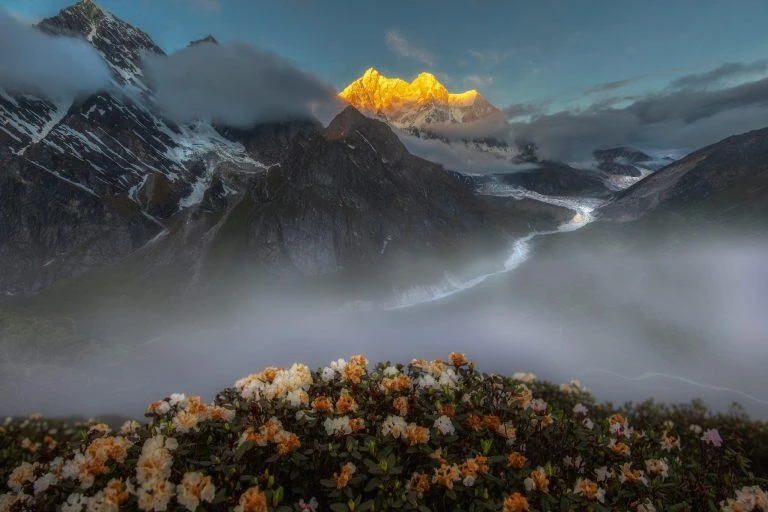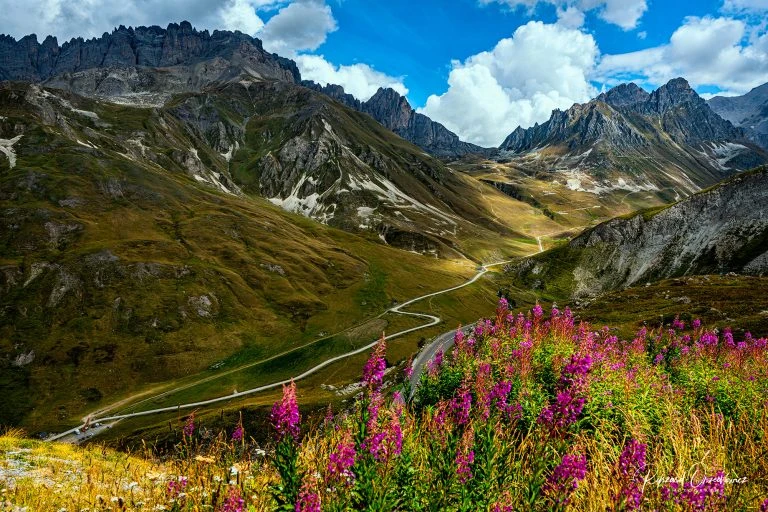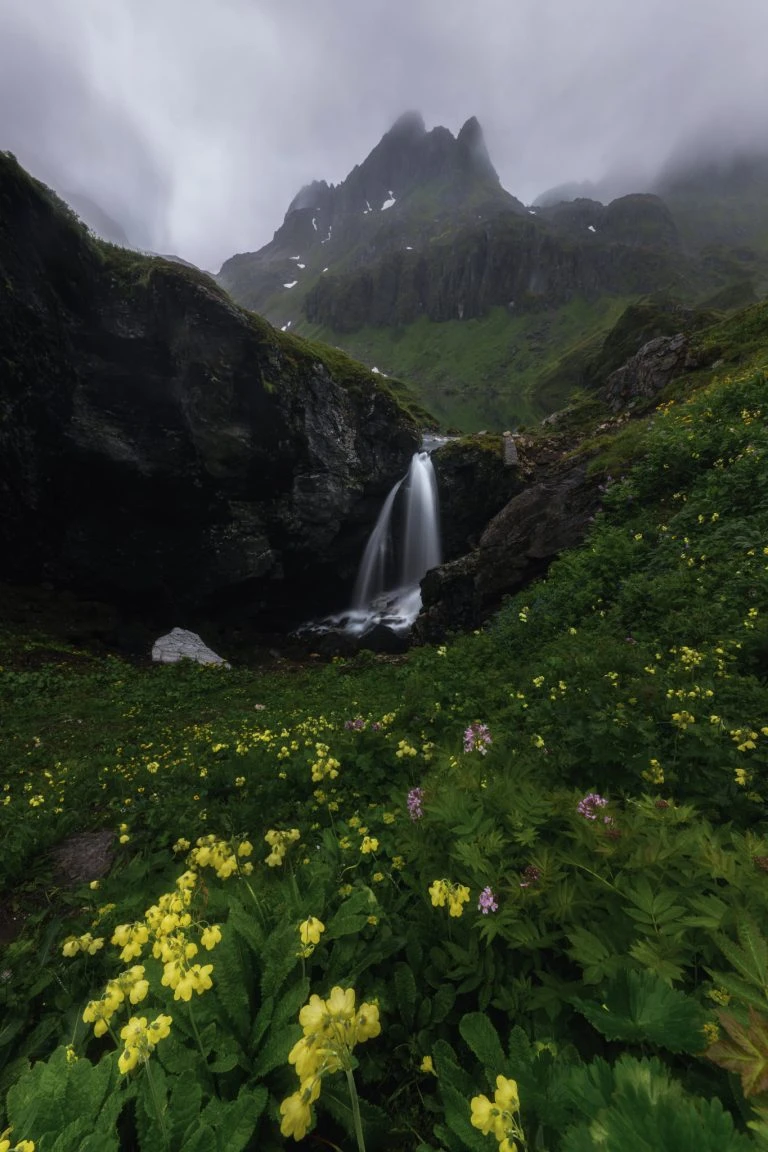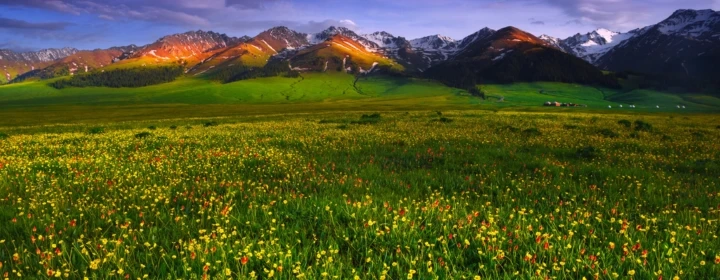Nestled in the picturesque state of Uttarakhand, India, the Valley of Flowers Trek beckons adventurers with its pristine landscapes, rich biodiversity, and deep-rooted cultural significance. This UNESCO World Heritage Site is not just a destination for trekking enthusiasts but a sacred realm where nature and mythology intertwine, offering a truly enchanting experience for those who dare to explore its hidden wonders.

Introduction:
The Valley of Flowers Trek stands as a testament to the awe-inspiring beauty of the Indian Himalayas. Located within the Nanda Devi Biosphere Reserve, this trekking route attracts visitors from all corners of the globe seeking to immerse themselves in the splendor of nature. But what sets the Valley of Flowers apart is its profound connection to Hindu mythology. According to ancient legends, this ethereal valley is believed to be the resting place of the Sanjeevani herb, a mythical plant said to possess the power to bestow immortality. It is here that the mighty monkey god, Hanuman, journeyed in search of this miraculous herb to revive the fallen warrior, Lakshmana, in the epic tale of the Ramayana.
Trek Route:

The adventure begins in the quaint village of Govindghat, serving as the gateway to this mystical realm. From here, trekkers embark on a journey that traverses a diverse array of landscapes, each more breathtaking than the last. The trail meanders through dense forests teeming with life, where towering trees provide shelter to a myriad of bird species and elusive wildlife. As the path winds upward, trekkers are greeted by the melodious symphony of gushing streams, their crystalline waters cascading down moss-covered rocks in a mesmerizing display of nature\'s power.
As the treeline recedes, a world of enchantment unfolds before the eyes of intrepid explorers. Vast meadows, carpeted in a kaleidoscope of colors, stretch out as far as the eye can see, earning the valley its rightful name. Orchids, poppies, daisies, and primulas dance in the gentle breeze, their vibrant hues painting a portrait of paradise against the backdrop of snow-capped peaks. It is a sight that defies description, leaving visitors spellbound by the sheer magnitude of nature\'s beauty.
Flora and Fauna:

The Valley of Flowers is a haven for biodiversity, boasting a rich tapestry of flora and fauna found nowhere else on earth. Here, rare and endemic plant species thrive in harmony, their delicate blooms providing sustenance to a myriad of pollinators. Butterflies flit from flower to flower, their iridescent wings shimmering in the sunlight like precious jewels. And high above, the call of birds echoes through the valley, their melodious songs filling the air with music.
But it is not just the flora that captivates the hearts of visitors; it is also the promise of encountering the elusive creatures that call this wilderness home. Blue sheep roam the rugged slopes, their nimble hooves navigating the treacherous terrain with ease. The majestic snow leopard, a symbol of strength and resilience, prowls silently in the shadows, its golden eyes piercing the darkness. And amidst the ancient forests, the elusive musk deer wanders in solitude, its delicate features shrouded in mystery.
Cultural Significance:
Beyond its natural splendor, the Valley of Flowers holds deep cultural significance for the people of India. For centuries, this sacred land has been revered as a place of pilgrimage, where devotees come to pay homage to the gods and seek blessings for prosperity and well-being. Local legends speak of the valley as a gateway to the divine, where the earthly realm merges with the celestial heavens in a timeless dance of creation.
But perhaps the most enduring legacy of the Valley of Flowers is its role in Hindu mythology. According to ancient texts, it was here that Hanuman, the devoted disciple of Lord Rama, embarked on a quest to save his beloved brother, Lakshmana, from the clutches of death. Guided by the wisdom of the ancient sages, Hanuman journeyed to the ends of the earth in search of the mythical Sanjeevani herb, whose healing powers were said to rival those of the gods themselves. And it was amidst the verdant valleys and snow-capped peaks of the Himalayas that he finally found what he sought, bringing hope and healing to a world torn apart by war.
Practical Information:
For those daring to tread the path of legends, preparation is key to a successful journey. The best time to embark on the Valley of Flowers Trek is during the monsoon season, from July to September, when the valley is awash in a riot of color. Permits are required for entry into the Valley of Flowers National Park, and trekkers are advised to obtain them well in advance to avoid disappointment. Accommodation options along the trek route range from basic guesthouses to tented campsites, catering to a variety of preferences and budgets. As for essentials, a sturdy pair of hiking boots, warm clothing, and plenty of water are a must, along with a sense of adventure and a spirit of exploration.
FAQs:
Is the Valley of Flowers Trek suitable for beginners?
Yes, the trek offers a moderate level of difficulty, making it accessible to beginners with a reasonable level of fitness. However, it is important to be prepared for variable weather conditions and rugged terrain.
What is the best time to witness the blooming of flowers in the valley?
The peak blooming season typically occurs from mid-July to mid-August, offering the most spectacular floral displays. However, the valley is beautiful year-round, with each season offering its own unique charm.
Are there any restrictions or regulations for visiting the valley?
Yes, permits are required for entry into the Valley of Flowers National Park, and visitors are expected to adhere to conservation guidelines to protect the fragile ecosystem. Additionally, camping is not permitted within the park boundaries, and visitors are encouraged to practice Leave No Trace principles to minimize their impact on the environment.
Are there any medical facilities available along the trek route?
Basic medical facilities are available in nearby villages, but trekkers are advised to carry a first aid kit and any necessary medications. In case of emergency, evacuation services are available, although they may be limited in remote areas.
Conclusion:
In conclusion, the Valley of Flowers Trek is more than just a journey through the mountains; it is a voyage of discovery, a pilgrimage to the heart of the divine. As travelers venture into the unknown, they are greeted not only by the beauty of nature but by the timeless wisdom of ancient legends. It is a place where the veil between the seen and the unseen is lifted, where the mundane world fades away, and the soul is free to soar among the stars. So let us heed the call of the mountains, embrace the spirit of adventure, and embark on a quest for truth, beauty, and the eternal essence of life itself.


